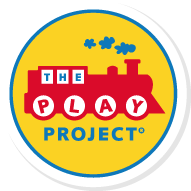Written by Richard Solomon, MD
For the longest time I wondered why so many children with autism spectrum disorders (ASD) loved trains and wheels as their favorite ‘special interests’. When I finally figured it out, I not only answered my question but learned something fundamental about human nature.
Let me start by telling you about the first person I ever met with autism. His name was Charles. Before medical school, before pediatric residency, before my fellowship in developmental and behavioral pediatrics, I was a mental health worker for the Ann Arbor, Michigan school district. The school had the cutest name—Pebble Creek—where the worst behaved children in all of Ann Arbor were sent when the neighborhood schools couldn’t handle them. I was assigned to Charles one of the worst behaved of the worst behaved children in cutely named ‘Pebble Creek’.
Charles was a gangly twelve-year-old with the pimples of puberty just beginning on his baby face. But he was no baby; Charles swore like a sailor, and burped repeatedly when threatened, and, for a while there, he even threw up on purpose when he felt upset—and he felt upset a lot by any demand or change. He was higher functioning but very autistic in his behaviors.
One of his behaviors that drove me nuts was the way he walked. He would take a step forward then rock back on his back leg and flap his hands like an awkward bird; step forward, rock back, flap; step forward, rock back, flap—every single step. You couldn’t go anywhere fast with Charles and, as his assigned mental health worker, I had to follow him down the long halls of Pebble Creek school every day, day after day, month after month, until I just couldn’t stand it anymore. Finally, I moaned, “Charles, why are you walking this way?!” I thought it was just a rhetorical question, but Charles actually had an answer. He looked me in the eye (which he rarely did) and said matter-of-factly:
“I’m undoing.”
“Undoing?” I asked, puzzled.
“I take a step forward and undo it. Then I take another step forward and undo that one.”
And it hit me. In his own mind, Charles never ever took a step forward in life! Through this obsessive walk, he was keeping the world the same. It turns out Charles was teaching me a crucial lesson about autism that has stayed with me all these decades of serving children with autism and their families: Children with autism want to keep the world the same. When you understand this, you understand a lot. In fact, this is one of the two main criteria in the definition of the condition according to the DSM 5. The first is social impairments and the second is restrictive, repetitive, and stereotyped behaviors.
Why are repetitive behaviors so central to autism? Because the brains of all children with autism have poor neuronal connections. Nancy Minshew, MD, a pediatric neurologist and early specialist in the field of autism, was one of the first to name this condition of the brain: “neuronal under-connectivity”. The work of the pathologist Eric Courchesne, MD and others, who have studied the autopsied anatomy of the brains of children with ASD, confirm that the little nerve cells of the brain are indeed disorganized and chaotic or lacking in connections or too jam-packed together and not firing the right way. The emerging genetic studies also indicate that the genes coding for brain connections are abnormal and cause ‘neuronal under-connection’ in the brains of those with ASD.
The way I explain this to parents is to say that the child’s brain is like a loose net that can’t capture the complexity of the world and lets the details of the world fall through. Thus, the child with autism feels much better when the world stays the same and is predictable and orderly. What is more orderly than the line? And what is more like a line than a train—a line segment that becomes a longer and longer line the more trains that are added? And what is more exciting than a line connected to itself to form a wheel? It’s enough to make one clap (or flap) and jump with excitement!
As the children in my office line up the Thomas the Tank Engine trains in a row, I often just sit in awe with, I admit it, a touch of jealousy, to observed how totally ‘into it’ they are, with that intense, absorbed joy of seeing a line, a kind of ecstatic look on their face. The beauty of the line is deeply appreciated by the child with ASD. It is the deep appreciation we all have at the moment of perceiving ‘beauty’.
All humans have a need for order, to keep the world the same or at least predictable. We all have our routines, our habits, our obsessions. How many of us are ‘addicted’ to binge watching the latest multiple episode TV novel or continuously checking our email or Facebook page? You know who you are! I joke that If you have a lot of these traits, you’re called an engineer. I jest about the engineers and their linear thinking. But it is human nature to want to know what the future brings.
But it is not good to be too orderly. If we become too fixated, narrow, and obsessed, this can lead to addiction and children with ASD do become literally addicted to trains, iPads, YouTube, and video games. When the ‘beauty of line’ begins to turn into addiction, I tell parents we must reduce screen time, and interrupt sameness. I am always pushing potential and promoting complexity. So, what are the most complex human activities? Answer: language, social skills, and creativity; pushing our limits to grow psychologically, to be imaginative and creative, to love, to care, to be empathic—these are the highest human achievements.
In order to help the child with autism reach their highest potential, we must help them move from simplicity to complexity, from the beauty of the line to the beauty of communication and the joy of playfully and meaningfully connecting with others. We must help the child with ASD grow those little neurons to form a tight net that does not let the complex world fall through. So, we ‘woo’ the child with ASD up the ladder of development to eventually, hopefully, become emotionally intelligent to discover the joy of reaching their full potential.
We cannot be happy or successful staying the same as humans whether you are a hunter gatherer from hundred thousand years ago or a 21st century techno-man of today. You must grow and change to create the better you. It is the way of life until you experience the eternal ideas of beauty, truth, goodness, and love; until you can stand in the museum of art in front of a Picasso painting and fully appreciate the Beauty and share it with your friend, someone you love, and find joy in their appreciation of the beauty of his line.

